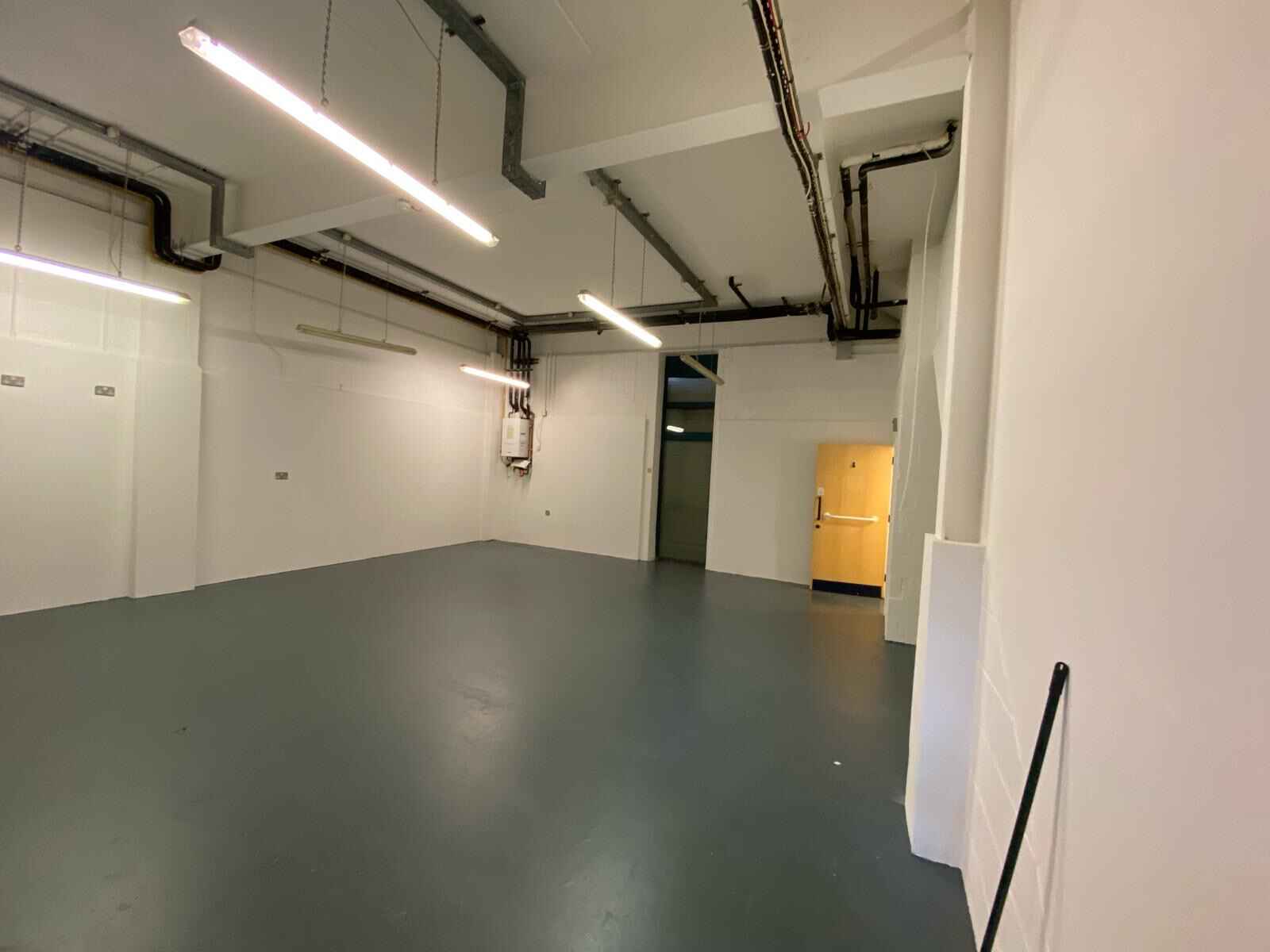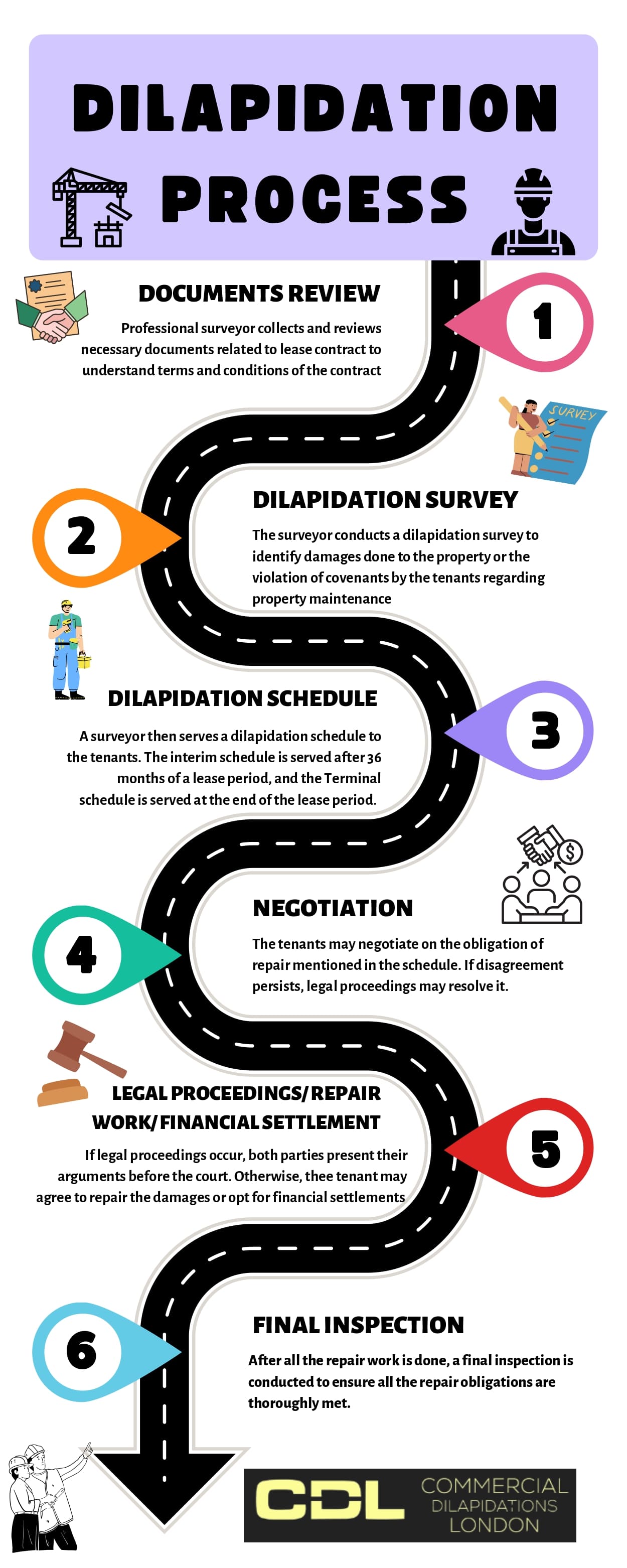What is the Dilapidation Process?
The state of dilapidation refers to the disrepair or neglect of a leased property. At the end of the lease term, tenants must return the leased property to its previous condition to the landlord. If the property is not maintained correctly, the landlord can send a dilapidation schedule mentioning violations of dilapidation covenants. The commercial dilapidation process involves specific steps to complete the dilapidation process efficiently.
Six steps of the dilapidation process
Documents review
The dilapidation process starts with reviewing the necessary documents to understand the contract between the tenant and landlord. A professional dilapidation surveyor collects all the required documents, including the lease contract or any other documents that may alter the agreed lease terms and conditions. Before conducting the survey, a professional surveyor reviews all the documents to identify the tenant's breach of dilapidation covenants.
Dilapidation survey
The survey is the next step in a commercial dilapidation process. The professional surveyor meticulously surveys the building to identify damages or disrepair caused by the tenant. The property damages are listed, and the dilapidation schedule is prepared.
Schedule of dilapidation (Interim and End of term)
The schedule of dilapidation is one of the most crucial steps in the dilapidation process. A professional surveyor prepares a dilapidation schedule on behalf of the landlord, identifying and listing damages to the property. The schedule of dilapidation also involves the possible cost of the damages that the tenant is liable to pay. The schedule of dilapidation generally has two types: interim and terminal. An interim schedule is served in the middle of the lease term, and if the lease term is comparatively more extended, it is also served after 36 months. On the other hand, the schedule of dilapidation served at the end of the lease term is called terminal dilapidation.
Negotiation
Upon receiving the schedule of dilapidation, which contains the repair cost, the tenant may negotiate with the landlord regarding the tenant's liability to repair the property. If the tenants disagree with the dilapidation claims, they may also produce their version of the schedule in response. A professional dilapidation surveyor prepares and presents the dilapidation schedule for both parties.
Legal proceedings/Repair work/Financial settlement
At this stage, the dilapidation process may escalate to legal proceedings if both parties do not agree to dilapidation claims. Or, the tenants may agree to the obligations mentioned in the schedule and conduct necessary repair work. It will help in resolving the dispute between the landlord and tenant effectively. Otherwise, the tenant may offer to settle his obligations through financial means. He can fully pay the total dilapidation cost and resolve the matter outside of the court. Settlement of the dispute through financial settlement is efficient for tenants as they are not responsible for ensuring the quality of repair work. Similarly, the landlord will be able to repair the property as soon as possible to make it ready for the next tenants.
Final inspection
After the repair, a final inspection is conducted to ensure the tenants have met all their obligations. A proper adherence to obligations completes the dilapidation process.
Interim or Terminal schedule - which one is the best?
An interim dilapidation schedule is the best option from the landlord’s perspective to avoid legal complications and remind the tenant of his property maintenance obligations. It will ensure that the tenants repair the property during the tenancy term. It is also beneficial for tenants not to suddenly become financially burdened with restoring the property.
Tenants have the chance to fix the property during the remaining tenancy period. On the other hand, the terminal schedule is served at the end of the tenancy period, identifying the tenants' breaches of covenants. The process may involve complications as the tenants deny their repair obligations.
If landlords serve a schedule in the middle of the lease term, the dilapidation process can be completed efficiently per the agreement between the two parties. During the repairing phase, both parties can communicate with each other to resolve disputes collaboratively.













